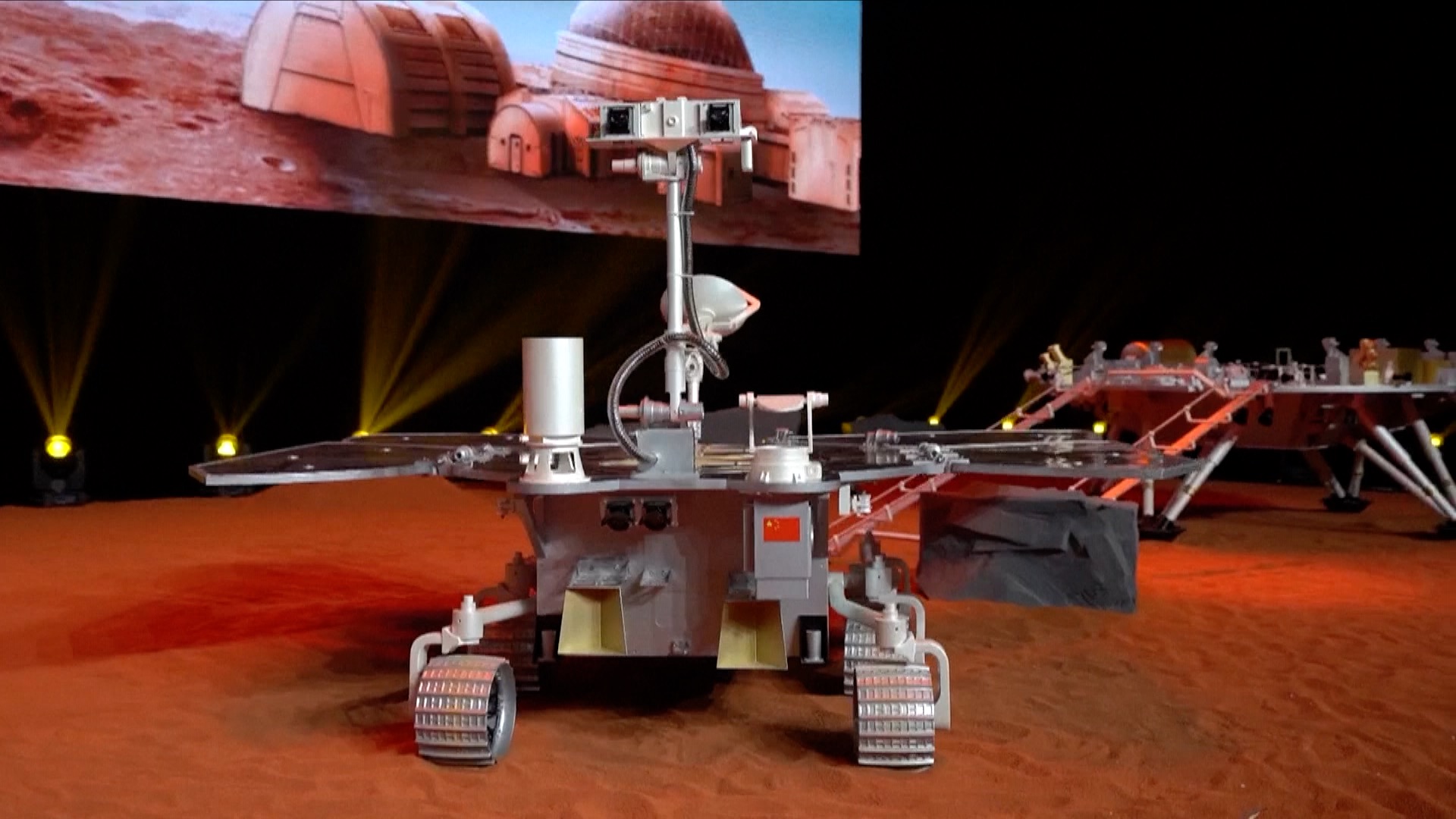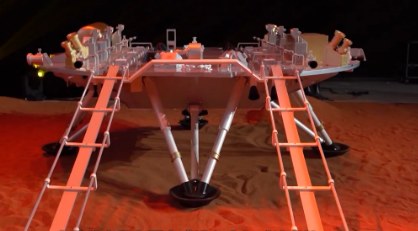01:02

China is ready to launch its Tianwen-1 Mars probe in the coming days, which includes an orbiter, a lander and a rover. So what do they look like? The country unveiled full-sized models of the lander and rover on Wednesday.
The Rover
The rover will work for over 90 days on Mars, exploring the planet and sending back what it detects to Earth.
It's equipped with a 60-centimeter-high mast with detecting device, two panorama cameras on its top to avoid obstacles when moving forward, as well as a multispectral camera to identify minerals.
It also has four giant "wings" – solar panels to provide power for it. The rover can adjust the angles of its solar panels to receive more solar power, according to Liu Tongjie, deputy director of the Moon Exploration and Space Engineering Center of the China National Space Administration.
"As Mars receives less solar energy than the Earth and the Moon, the area [of its solar panels] is larger. It can angle its solar panels according to the direction of the sunlight. The more vertical the angle is, the more solar energy it will receive," said Liu.
Other instruments onboard include a detection radar, magnetometer and meteorological instruments, which will enable it to conduct an all-round exploration of Mars.
It can detect the ingredients of soil 10 meters underneath the surface of Mars and of ice 100 meters below the surface.
The rover is made out of hi-tech materials so that it can move at a speed of 200 meters per hour on Mars' surface despite the harsh conditions.

China's Mars lander. /Screenshot from CCTV
China's Mars lander. /Screenshot from CCTV
The Lander
Making a soft landing on Mars has never been an easy job, only eight of the 17 landing missions in human history to Mars have succeeded.
Liu said the thin atmosphere of Mars poses a challenge to the rover and the landing platform during their landing process.
"The density of the Mars atmosphere is relatively low. It is equivalent to one percent of the Earth's standard atmosphere. So we have to equip the landing platform with parachutes, which is more complex and difficult," said Liu.
The landing process takes only seven to eight minutes, during which the lander plays a critical role.
During the process, the lander, carrying the rover, needs to reduce speed from 20,000 kilometers per hour to zero in seven minutes during the re-entry, descent and landing process, which is known as "seven minutes of terror."
"In the landing process, the electromagnetic signal is completely blocked. So the lander completely relies on itself, which requires it to have a strong ability to operate on its own," said Liu.
Read more: What is the most challenging part of Mars mission – 7 minutes of terror?
Once it successfully lands on Mars, a ramp will be extended for the rover to move onto the planet surface.
The fourth Long March-5 rocket, coded as Long March-5 Y4 and to be used to launch China's first Mars exploration mission, was vertically transported to the launching area at the Wenchang Space Launch Center in south China's Hainan Province on Friday.